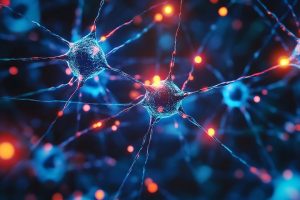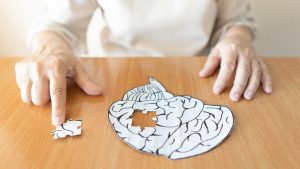Alzheimer’s disease often disrupts a person’s daily habits. Sleep disturbances, restless tossing and turning, and frequent daytime naps are common early warning signs. In later stages, patients often suffer from “sundowning,” a period of increased confusion and restlessness that tends to occur in the evening. These patterns suggest a close link between the progression of Alzheimer’s disease and the circadian system—the internal body clock that regulates sleep, wakefulness, and other daily biological cycles. Until recently, however, scientists were not entirely clear on how deep this link actually is.
82 Genes Associated With the Risk of Alzheimer’s Disease
A team of researchers at Washington University School of Medicine in St. Louis has now used mouse models to demonstrate that Alzheimer’s disease disrupts the circadian rhythm in certain brain cells. This disruption changes how and when hundreds of genes are turned on and off, altering important processes that contribute to proper brain function. Their findings, published in Nature Neuroscience, suggest that restoring or stabilizing these internal rhythms could open up a new approach to treating Alzheimer’s disease.
“There are 82 genes associated with the risk of Alzheimer’s disease, and we found that the circadian rhythm controls the activity of about half of these genes,” said Erik S. Musiek, MD, PhD, Charlotte & Paul Hagemann Professor of Neurology at WashU Medicine, who led the study. In mice bred as models for the disease, these genes no longer followed their usual daily patterns. “Knowing that many of these Alzheimer’s genes are regulated by the circadian rhythm gives us the opportunity to find ways to identify therapeutic treatments that can manipulate them and prevent the progression of the disease.”
The Burden of Sleep Disorders
Musiek, who co-directs the Center on Biological Rhythms and Sleep (COBRAS) at WashU Medicine and specializes in aging and dementia, noted that sleep disorders are one of the most common problems reported by caregivers of Alzheimer’s patients. His previous work showed that sleep changes begin years before memory loss occurs.
Beyond exhausting patients and caregivers, these disturbances cause stress that can accelerate the progression of the disease. To break this cycle, he said, we first need to find out where it begins. The body’s circadian system regulates about 20% of all genes in the human genome and controls vital processes such as digestion, immune response, and sleep-wake cycles.
In previous research, Musiek identified a protein called YKL-40 that undergoes natural fluctuations throughout the day and helps regulate normal amyloid levels in the brain. Too much YKL-40, which is associated with Alzheimer’s risk in humans, can trigger the accumulation of amyloid—a sticky protein that forms plaques, one of the hallmarks of the disease.
The Effect of Amyloid on the Brain’s Timing Mechanisms
Since the symptoms of Alzheimer’s follow a daily repeating pattern, the team suspected that other circadian-regulated proteins and genes might be involved. In the new study, they examined gene activity in the brains of mice that had developed amyloid deposits, as well as in healthy young mice and older mice without plaques. Samples were taken every two hours over a 24-hour period to track how gene expression changed over the circadian cycle.

New Rhythms and Potential Therapies
The study also showed that amyloid plaques appeared to generate new rhythmic patterns in genes that do not normally follow a daily cycle. Many of these genes are involved in inflammation or the brain’s response to stress and imbalances. According to Musiek, these findings suggest that therapies aimed at adjusting circadian rhythms in microglia and astrocytes could support healthier brain activity.
“There is still much we need to understand, but the key is that we are trying to manipulate the clock in some way, to strengthen it, weaken it, or turn it off in certain cell types,” he said. “Ultimately, we hope to learn how to optimize the circadian system to prevent amyloid deposition and other aspects of Alzheimer’s disease.








